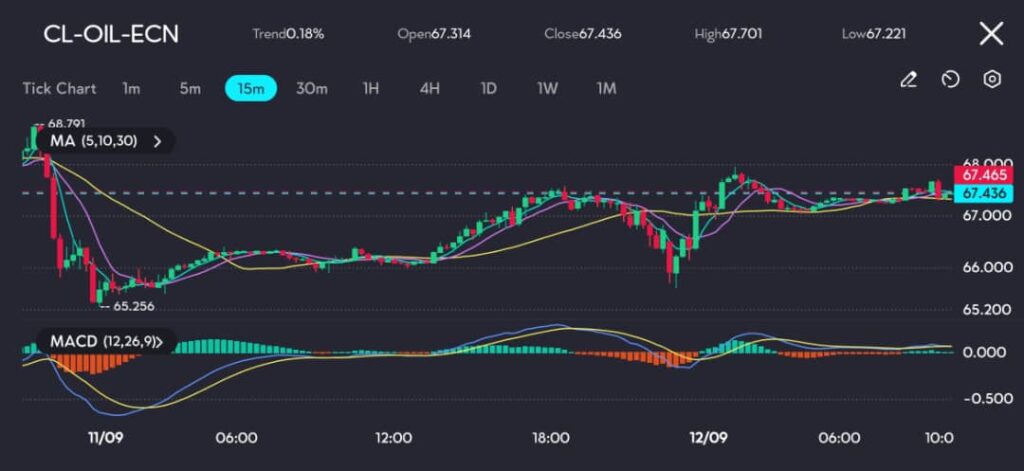Key points:
- Oil prices show little movement as demand concerns offset potential supply disruptions from U.S. hurricanes.
- Australian and New Zealand dollars find support as global stock markets rebound, with traders eyeing central bank rate decisions.
Oil prices remained relatively flat on Thursday, as signs of weakening demand across key economies outweighed the potential supply disruptions caused by U.S. hurricanes.
While such storms usually prompt concerns over reduced oil output, the market is seeing conflicting signals, particularly as energy consumption trends lower in several regions.
This balancing act has kept prices steady, reflecting caution among investors who are weighing global growth concerns against short-term weather impacts.

See: Oil prices trading at 67.465 as seen on the VT Markets app.
Oil prices initially spiked due to concerns over potential supply disruptions caused by hurricane activity near the Gulf of Mexico. However, this bullish momentum was counteracted by weaker-than-expected manufacturing data from Europe, combined with signs of cooling demand in China, which have led to a more tempered outlook for crude oil.
The chart for CL-OIL-ECN shows a recovery from the intraday low of $65.25 but struggles to maintain gains above the $68 level, currently trading at $67.43. The MACD indicator suggests the potential for continued sideways movement, with the moving averages (5, 10, 30) providing support around current price levels.
Analysts have highlighted declining refinery runs in Asia and slower industrial output as key factors contributing to reduced demand for crude oil, particularly in a market where supply disruptions have not yet materialised into shortages.
Oil prices are likely to remain range-bound as the market balances between these opposing supply and demand dynamics. Further direction may depend on developments in hurricane activity, industrial performance, and geopolitical factors.
Impact of U.S. inflation data
In the broader market, a higher-than-expected 0.28% reading on core U.S. consumer prices in August led investors to scale back expectations for an aggressive rate cut by the Federal Reserve.
With markets now pricing in a more moderate response from the Fed, this has had a ripple effect on other central bank decisions.
Start trading now — click here to create your live VT Markets account.









